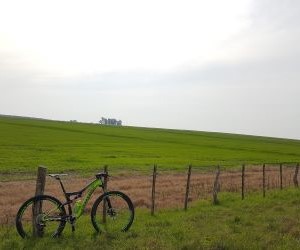Discover the most important cycling safety accessories every rider should have, from helmets to visibility gear, for safer and more confident rides.
HOW DO I AVOID DEHYDRATION IN DESERT CYCLING?
Desert cycling is brutal, beautiful—and potentially dangerous if you're not properly hydrated. This comprehensive guide breaks down how to recognize dehydration risks, plan your hydration strategy, and ride smarter under extreme heat. From choosing the right fluids to managing electrolytes, this is your essential toolkit for surviving and thriving on desert roads.

Why desert cycling increases dehydration risk
Desert riding is a test of both endurance and environmental management. The combination of dry air, intense sun exposure, and constant perspiration creates a perfect storm for rapid fluid loss. Understanding the physiological challenges is the first step toward prevention.
Low humidity means stealthy sweat loss
In humid climates, you feel the sweat. In dry deserts, it evaporates instantly—tricking riders into underestimating fluid loss. This “invisible sweat” masks dehydration symptoms until it's too late. By the time you feel thirsty, you're already behind.
Heat stress and cardiovascular strain
When core temperature rises, your body redirects blood to the skin for cooling. This lowers blood flow to muscles and increases heart rate. Add dehydration to the mix, and performance drops fast—often without warning signs like cramping or dizziness until it's severe.
Sweat rate can exceed 1 liter/hour
During intense desert rides, athletes can lose over a liter of fluid per hour. Without a proactive strategy, this deficit compounds, reducing endurance, impairing focus, and increasing risk of heat exhaustion or heat stroke.
Sweat evaporates quickly in arid climates, masking dehydration
Heart rate rises faster due to thermoregulation demands
Desert terrain usually lacks shade and cooling relief
Mild dehydration can reduce performance by up to 10%
Severe dehydration increases risk of heat stroke and kidney stress
Riding through the desert demands more than fitness—it requires preparation, environmental awareness, and strict hydration discipline.
Smart hydration strategies before and during the ride
Avoiding dehydration in the desert starts long before the first pedal stroke. Proper preloading, real-time intake, and electrolyte balance all play critical roles in keeping you safe and strong under the sun.
Preload the day before
Start hydrating 24 hours before your ride. Use electrolyte-enhanced water—not plain water alone—to optimize fluid absorption and sodium balance. Avoid diuretics like caffeine and alcohol, and aim for light-colored urine as a hydration marker.
Plan your fluid strategy by the hour
On hot desert rides, aim to drink 500–1000 ml per hour, depending on intensity and body size. Use two bottles: one with water and one with a high-quality electrolyte mix. If your ride exceeds 2 hours, add carbohydrates for sustained energy.
Use timing—not thirst—as your guide
In extreme heat, thirst is a lagging indicator. Set a timer or use bike computer alerts to prompt drinking every 10–15 minutes. Sipping consistently is far more effective than chugging irregularly.
Drink 500–1000 ml/hour in desert conditions
Add sodium (300–700 mg/liter) to prevent hyponatremia
Use insulated bottles or hydration packs to keep fluids cool
Consider salt tablets for longer rides over 3 hours
Pre-hydrate with 500–750 ml electrolyte drink the night before
Hydration is a performance tool and a safety protocol. Don’t wait to feel symptoms—act ahead of time.
Essential gear and recovery protocols
Staying hydrated in the desert isn’t just about how much you drink—it's also about the tools and recovery steps that support fluid retention, reduce overheating, and prepare your body for the next ride. Gear and post-ride tactics can make or break your hydration plan.
Must-have gear for desert hydration
Hydration packs with insulated bladders are game-changers on long desert rides. Unlike bottles, they allow hands-free sipping and higher capacity. Pair that with UV-protective clothing, cooling towels, and a light-colored helmet to reduce heat load.
Post-ride rehydration matters
Within 30 minutes post-ride, rehydrate with a mix of water, electrolytes, and carbs to accelerate recovery. Avoid plain water alone—it can dilute sodium and worsen imbalances. Track your weight pre- and post-ride to estimate fluid loss and guide replenishment.
Monitor long-term hydration habits
Desert riding places recurring stress on your system. Build a habit of drinking throughout the day, not just during training. Combine water with potassium- and magnesium-rich foods like bananas, leafy greens, and nuts for ongoing electrolyte balance.
Use a 2–3 liter hydration pack with easy-access valve
Wear UPF-rated arm sleeves and ventilated jerseys
Weigh yourself pre- and post-ride to gauge sweat loss
Rehydrate with a 3:1 carb-to-protein ratio drink post-ride
Avoid sugary sodas or caffeine-heavy drinks as primary fluids
Proper gear amplifies hydration efficiency, while recovery ensures your system is ready to handle tomorrow’s heat.
YOU MAY ALSO BE INTERESTED






